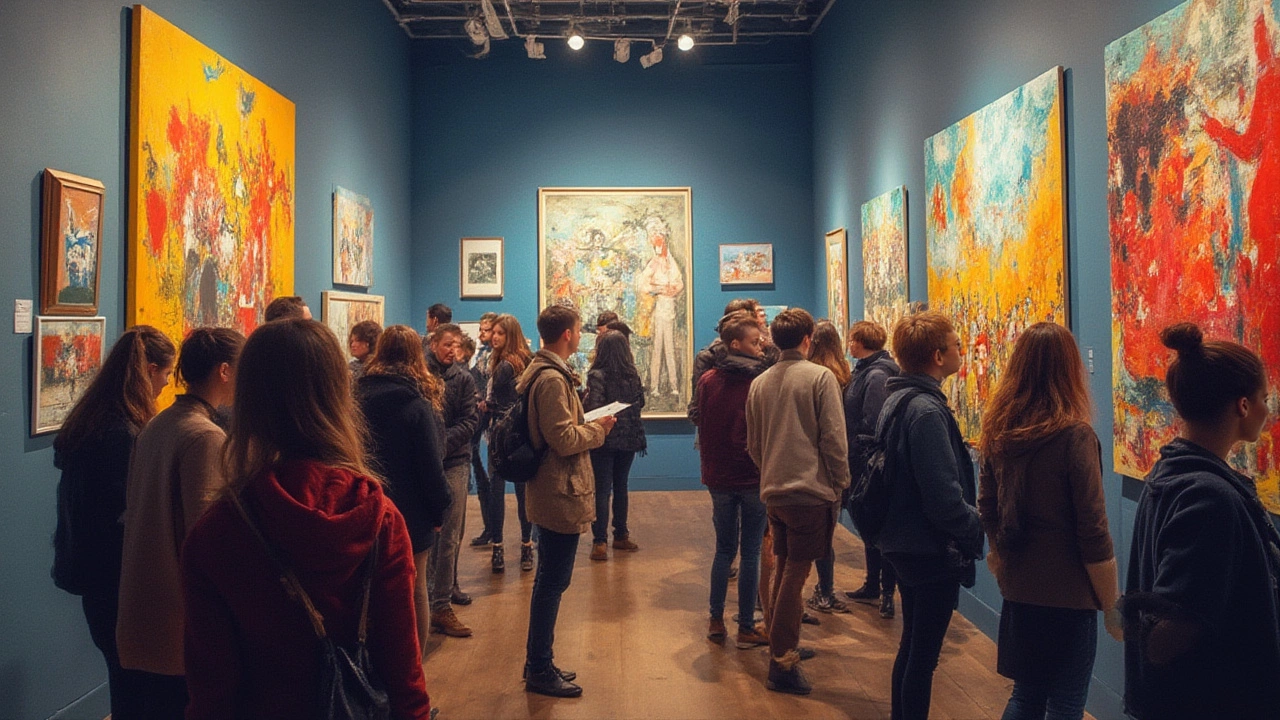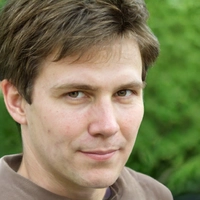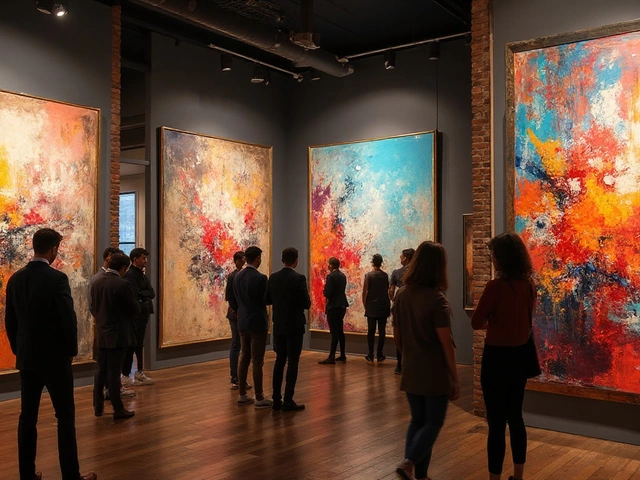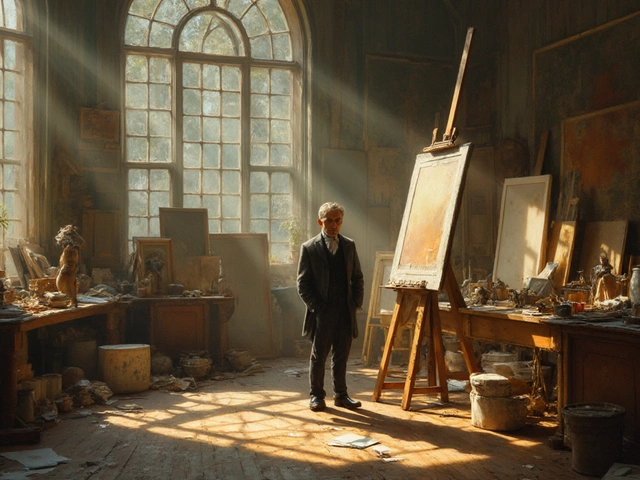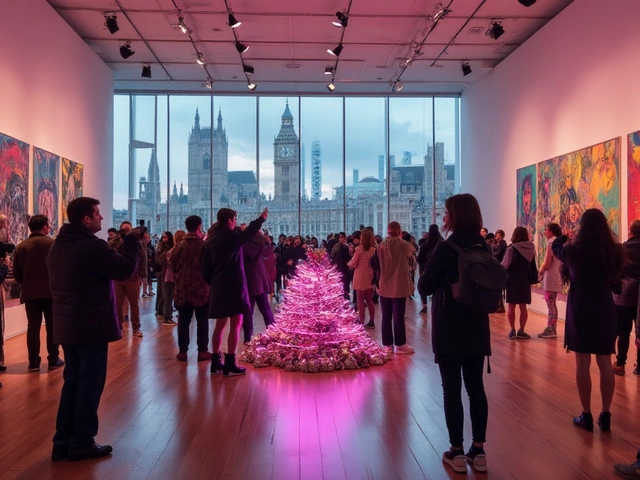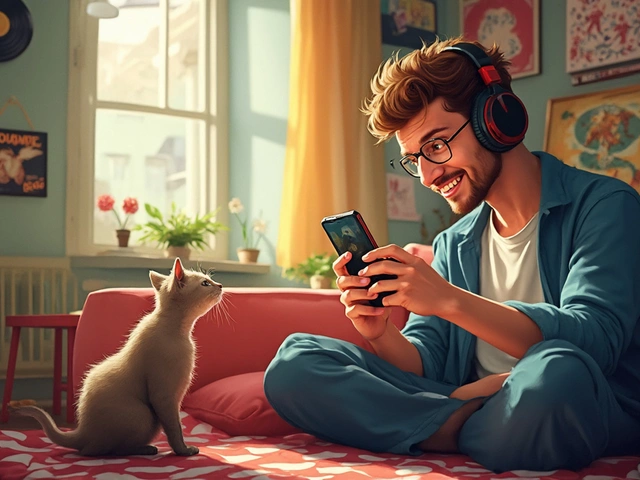Ever stared at a splash of paint on a white canvas and wondered, ‘Is this really art?’ You’re not alone. Modern art has been turning heads, raising eyebrows, and stirring passionate debates since it broke away from traditional forms. Forget what you think you know—modern art is less about pretty pictures and more about shaking up how we see the world, what we feel, and even what we consider “art” in the first place. Instead of realism and flawless technique, it’s all about self-expression, challenging the norm, and making people stop and think. If that sounds weird, it’s supposed to be, and that’s what makes modern art so irresistibly fascinating.
What Sparked the Modern Art Movement?
The roots of modern art dig deep into the late 19th century, a time when the world was changing fast. Rapid industrial growth, fresh scientific ideas, and big social shifts pushed artists to rethink everything. Folks like Claude Monet and Edgar Degas tossed old rules out the window. Instead of painting kings and historical scenes, they captured fleeting moments—like light shimmering on water or a dancer’s quick movement. That’s how Impressionism kicked things off around the 1870s.
This rebellious energy didn’t stop there. The real meat of modern art unfolded over the next century. In Paris, Pablo Picasso and Georges Braque splintered reality into cubes and angles, launching Cubism. Not long after, artists like Wassily Kandinsky and Kazimir Malevich started going fully abstract—ditching recognizable subjects for colors and shapes that hit your gut, not your eyes. Fast-forward to the 20th century: Dada, Surrealism, Expressionism, Abstract Expressionism… the list goes on. Every time a new ‘ism’ was born, it tried to shock or outsmart the last.
Here’s a fun bit: modern artists had their enemies. Critics laughed at Monet’s “Impression, Sunrise” in 1874, calling the work unfinished and sloppy. The name ‘Impressionism’ was meant as an insult! But the ridicule just fueled the movement. After all, the heart of modern art is daring to be different, even if it gets you called names.
By the early 20th century, artists had a wild playground. Technology let them travel, meet strangers, and see art from African, Asian, and Latin American cultures—all things that filtered into their own works. Automatic drawing, collage, photo-montage, scrawled slogans—artists tried everything. The traditional studio with neat oil paint tubes became less important than street walls, experimental photography, and even ready-mades like Marcel Duchamp’s infamous urinal, which he titled “Fountain” in 1917. Yes, you read that right—a urinal. It’s both a joke and a radical redefinition of what art could be.
If you’re wondering when ‘modern art’ stopped being ‘modern,’ you’re not alone. In museums, “modern art” usually covers works made from the 1860s up to the 1970s. After that, the term “contemporary art” takes over, snapping up everything fresher. Still, what we call “modern” remains crucial—it’s the era when artists stopped following, and started leading.
Key Ideas and Wild Experiments in Modern Art
So what separates modern art from everything that came before? For starters, it’s all about breaking the rules. Artists didn’t just invent new styles—they tore apart the very idea of what art should be. If artists before modern times aimed to impress royalty or catch God’s glory on a church ceiling, modern artists wanted to ask questions, stir emotions, or just mess with your head.
One major shift: subject matter. Gone were the days when every painting needed a Bible story, a battle, or a portrait of some rich guy. Artists started painting what they saw around them—factory smoke, daily life, friends at a café. Others went even further, making work about inner worlds—emotions, dreams, nightmares. Surrealists like Salvador Dalí brought raw subconscious fantasies to life, clock faces melting in strange landscapes. Expressionists, such as Edvard Munch with his iconic “The Scream,” turned feelings into twisted color and frantic brushwork.
Modern art didn’t just challenge what was beautiful. It questioned what was real, what was permanent, and even what was allowed. Picasso’s Cubism, for example, showed objects—and people—from a dozen viewpoints at once, crumpling time and space together. Abstract art? That was a bombshell. Suddenly, a painting didn’t have to be ‘of’ anything. Kandinsky’s bright swirls and rectangles were meant to create a mood, the way music does.
This era also gave us brand-new tools and tricks. Collage—pasting scraps of paper, newspaper, wood, or string onto a canvas—became high art. Artists like Hannah Höch turned scissors and glue into weapons against polite society, tackling politics and gender roles through their compositions. Photography started out as a way to document reality, but modern artists twisted it into something odd, manipulative, and mysterious. The resulting photomontages by Man Ray, or surreal snapshots by Dora Maar, still feel fresh even now.
Another game-changer: performance art. Instead of making objects for display, artists began using their own bodies or those of volunteers. The Dadaists (think Berlin and Zurich around World War I) staged events full of nonsense poetry, music, and acts that intentionally rubbed audiences the wrong way. For them, the art existed in the moment, not as a product to hang on a wall. Sound familiar? That’s because reality TV and flash mobs borrowed the idea.
Some of these wild experiments remain controversial. Take Malevich’s “Black Square” (1915). It’s just what it sounds like: a black square, nothing else. Some people saw genius, others saw an insult to the art world. But that’s modern art for you—if it makes you feel something, even confusion or anger, it’s doing its job.
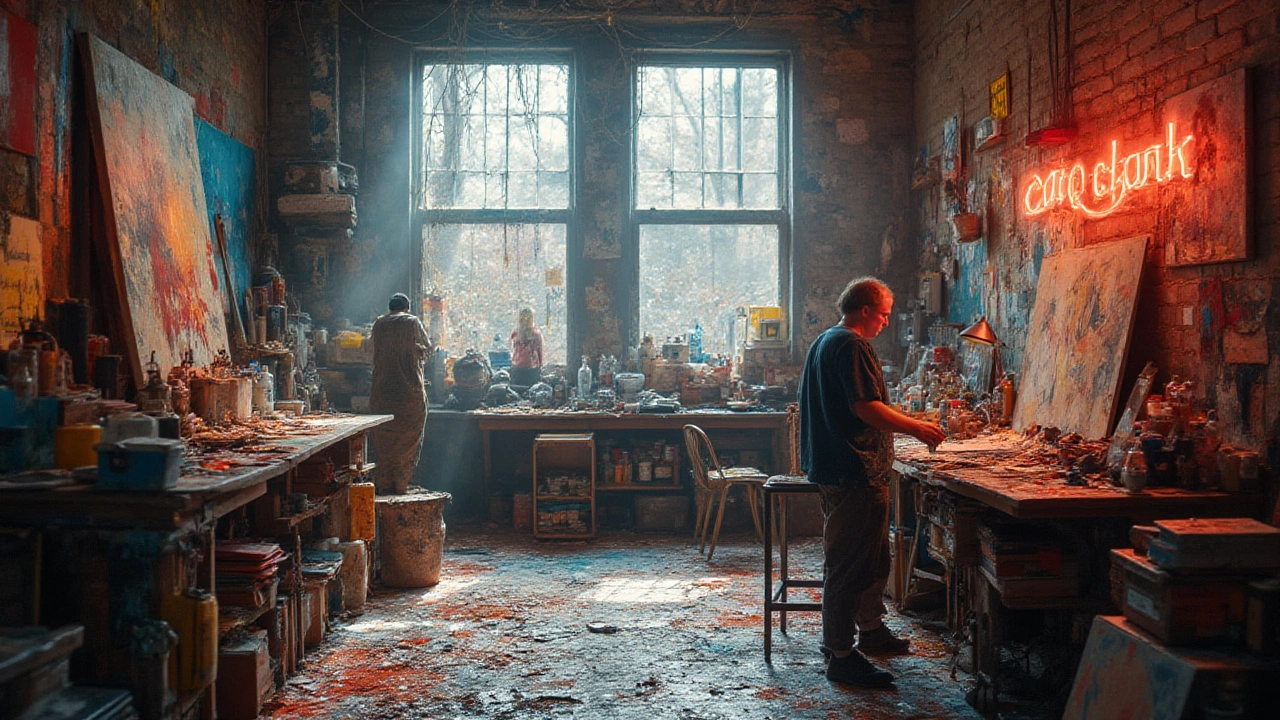
Famous Artists and Movements You Should Know
If you want to hold your own in a coffee shop chat about modern art, you’ll want more than “I could have done that.” Get a grip on some of the big players and wild movements that left their mark.
- Claude Monet (1840-1926): His “Water Lilies” are dreamy washes of color that capture fleeting moments perfectly. Impressionism started with him and a handful of friends painting the world as they really saw it.
- Vincent van Gogh (1853-1890): Famous for his bold colors and energetic brushstrokes. He painted “Starry Night” while in a mental asylum—proof that art and struggle are tangled together.
- Pablo Picasso (1881-1973): Never settled on a style for long. Co-founder of Cubism, but also painted the heartbreaking “Guernica” about the horrors of war. He once said, “Every act of creation is first an act of destruction.”
- Georgia O’Keeffe (1887-1986): Known for her close-up paintings of flowers and desert landscapes. She shook up American modernism with works that were sensual, tough, and boldly original.
- Marcel Duchamp (1887-1968): The prankster behind “Fountain,” a urinal-turned-art-icon. He blurred the line between artist and provocateur.
- Henri Matisse (1869-1954): Used exuberant colors and shapes to express pure joy. “The Dance” looks simple but took real guts to make.
- Jackson Pollock (1912-1956): Flung paint across vast canvases. His “action painting” method let paint, gravity, and gesture create something wild and unpredictable—no brushes needed.
Modern art splintered into countless movements, each trying to go further than the last. Impressionism caught everyday, fleeting sights; Cubism fractured reality; Dada mocked everything, especially war and authority; Surrealism unlocked dream logic. In the U.S., Abstract Expressionism (think Pollock and Mark Rothko) dominated the mid-20th century, making New York a global art capital. Pop Art followed, with Andy Warhol and Roy Lichtenstein ripping images from advertising and turning soup cans and comics into cultural icons.
Not all trailblazers got celebrated in their lifetime. Many, like van Gogh or Arshile Gorky, lived poor, misunderstood, or anonymous. Today they’re art-world royalty, their canvases auctioned for millions. The lesson: modern art rewards risk-takers, even if the rewards come late.
If you’re looking to connect with these movements, don’t just Google them. Visit a museum, or flip through an art book. Seeing the textures and colors up close gives you a real gut-punch moment—a reminder that these rebels meant every brushstroke.
How Modern Art Shapes How We See the World Today
Modern art isn’t just a chapter in an art history textbook—it’s a live wire, still sparking ideas, protests, and possibilities. The experiments and arguments of the modern era breathed life into street art, digital work, and the never-ending question: Is this art?
Look around today and you’ll see modern art’s fingerprints everywhere. That graffiti mural on a city wall? That’s got roots in the modern urge to challenge the system and reach people outside the gallery. The viral digital collages that flood Instagram? Collage and photo manipulation have been a modern art staple for a hundred years. Even how we engage with art changed—museums now offer interactive screens, QR codes, and rooms you can step inside, all inspired by modern art’s push to blur boundaries.
Modern art also made being confused okay, even good. Before Monet, most people wanted art to be clear. Now, it’s taken for granted that art can be mysterious, raw, or political—even if you don’t get it at first. Artists today draw straight lines from early modernists: they take on big issues—race, identity, climate—just as Dada artists mocked war or Picasso tackled the Spanish Civil War in “Guernica.”
And about the money: modern art is a huge business. Works by modern greats have pulled in record auction prices—think $450 million for a da Vinci or $179 million for a Picasso. This boom isn’t just about collectors showing off; it reflects how people still crave the shock, beauty, and challenge of modern art.
If you want to dip your toe into modern art, don’t feel like you need an art degree. Trust your reactions. If a painting makes you pause, laugh, or rankle, you’re right there with the artists who, a century ago, wanted to wake people up. Here are a few tips:
- Start by asking, “What do I feel?” not “What does it mean?”
- Read the labels, but don’t get hung up—these artists often preferred mystery.
- Talk with a friend about what you see. You’ll often notice things you’d miss alone.
- Try recreating a modern work at home—think cut-up magazines for a collage, or wild finger painting. You’ll suddenly understand why ‘breaking the rules’ can feel so freeing.
So next time you see that paint-splattered canvas or odd sculpture, remember: modern art isn’t supposed to blend in or make you simply say, “That’s pretty.” It’s here to jolt, question, and invite you to look again. The facts are wild, the stories are wild, and the possibilities are wide open—just like the minds that made them.
